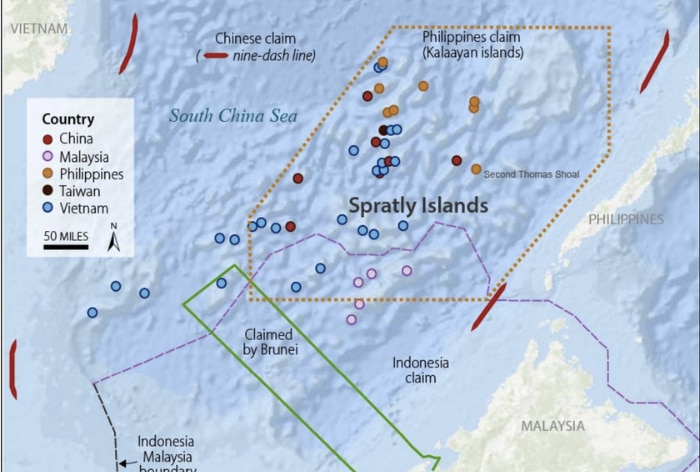
[ad_1]
The spokeswoman of the Vietnamese Ministry of Foreign Affairs Pham Thu Hang on August 31 made the statement, while answering questions on Vietnam’s response to the Chinese Ministry of Natural Resources (MNR)’s release of the so-called “standard map 2023” which covers Vietnam’s Hoang Sa and Truong Sa.

New Delhi: Following India and four other countries — Malaysia, Indonesia, Taiwan, and the Philippines — in strongly protesting China’s so-called “standard map,” Vietnam has also stood up and rejected all of Beijing’s claims in the East Sea region of the Indo-Pacific.
Hanoi Takes A Strong Stance Against China
Hanoi has strongly reiterated its consistent stance on the sovereignty over Hoang Sa (Paracel) and Truong Sa (Spratly), and resolutely rejected any maritime claims of China that are based on the “nine-dash line” in the East Sea, Vietnam-based news platform ‘Vietnam +’ reported.
The spokeswoman of the Vietnamese Ministry of Foreign Affairs Pham Thu Hang on August 31 made the statement, while answering questions on Vietnam’s response to the Chinese Ministry of Natural Resources (MNR)’s release of the so-called “standard map 2023” which covers Vietnam’s Hoang Sa and Truong Sa.
China’s “Nine-Dash Line”
“The issuance of the map as well as China’s “nine-dash line” claim show a violation of Vietnam’s sovereignty over Hoang Sa and Truong Sa, as well as Vietnam’s sovereignty, sovereign rights and jurisdiction over its waters as stipulated in the 1982 United Nations Convention on the Law of the Sea (1982 UNCLOS),” Vietnam + quoted Hang as saying.
“Therefore, the sovereignty and maritime claims based on the “nine-dash line” as reflected in the map are void and violate international law, particularly the 1982 UNCLOS,” she added. China, on August 28, released the 2023 edition of its “standard map”, incorporating the country’s claims over the nine-dash line, thereby laying claim to a large part of the South China Sea. India lodged a strong protest against China, rejecting claims made by Beijing in the so-called “standard map” and saying they have no basis to claim India’s territory.
Stance Of India’s Ministry of External Affairs (MEA)
The Ministry of External Affairs (MEA) said such steps from the Chinese side would only complicate the resolution of the boundary question. After India, Malaysia, Indonesia, Taiwan, Philippines also lodged strong objections to Beijing’s claims. However, in an attempt to appear unfazed, Beijing termed its publication of the so-called “standard map” as a ‘routine practice’ and asked the concerned nations to view it in an “objective and rational light”.
“China’s position on the South China Sea is consistent and clear. The competent authorities of China routinely publish standard maps of various types every year, which aims to make standard maps available to all sectors of society and raise public awareness of the standardized use of maps,” the
Chinese Foreign Ministry spokesperson Wang Wenbin said in a regular press conference today.
“We hope parties concerned can view it in an objective and in a rational light,” he said. This is not the first time that Beijing has employed such tactics. In April this year, China had unilaterally “renamed” as many as 11 Indian locations, which included names of mountain peaks, rivers and residential areas.
(With ANI inputs)

Don’t Miss Out on the Latest Updates.
Subscribe to Our Newsletter Today!

[ad_2]